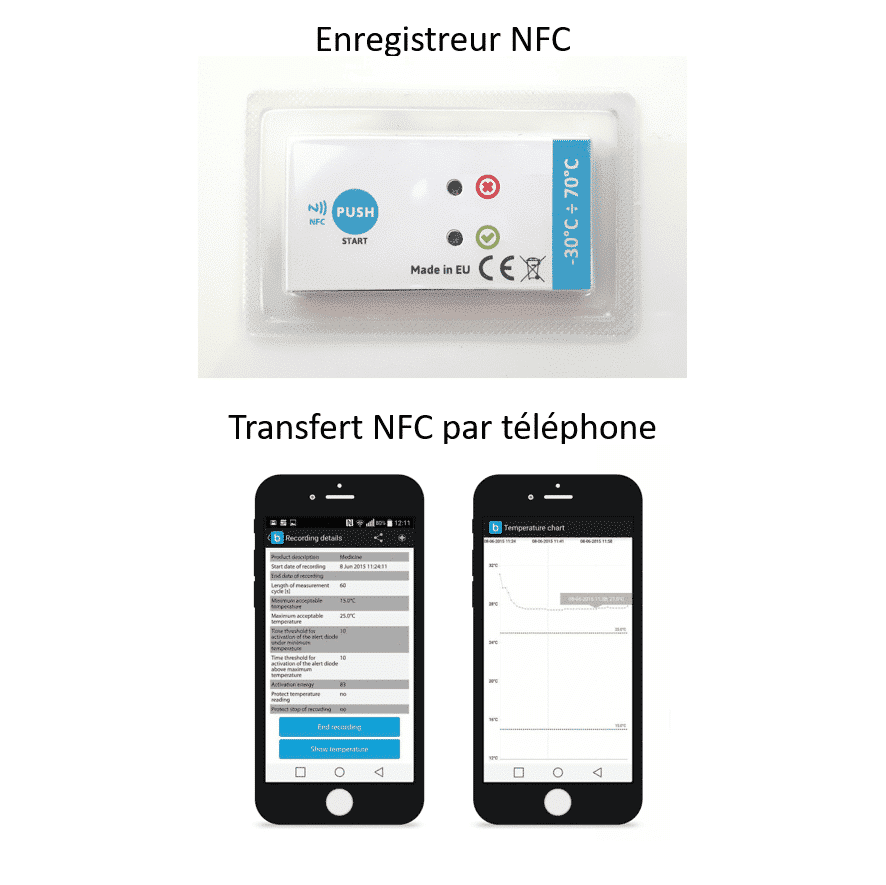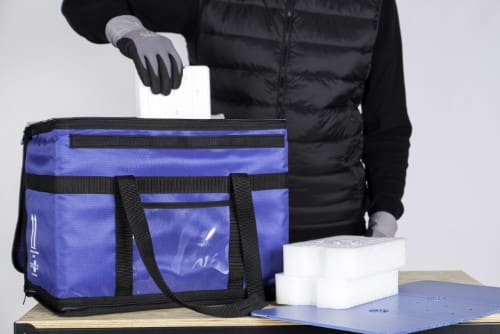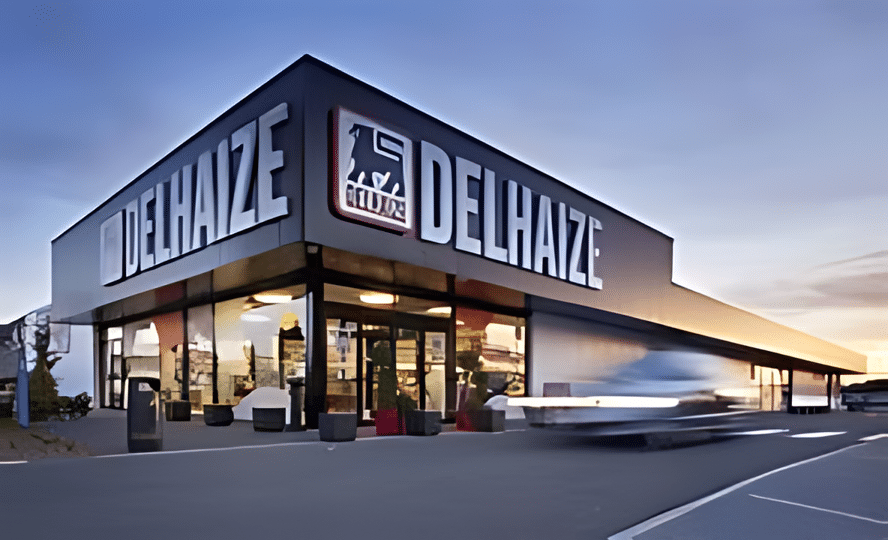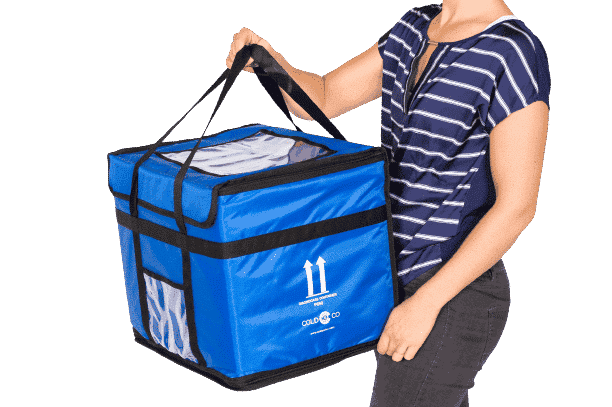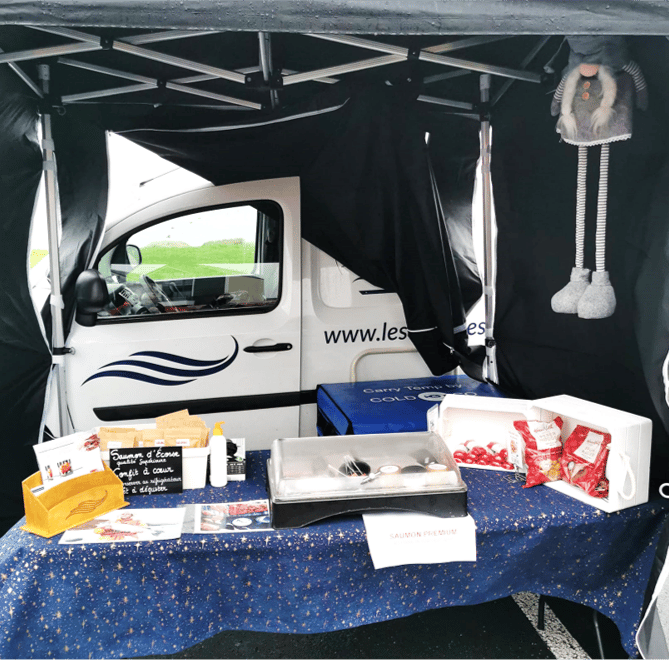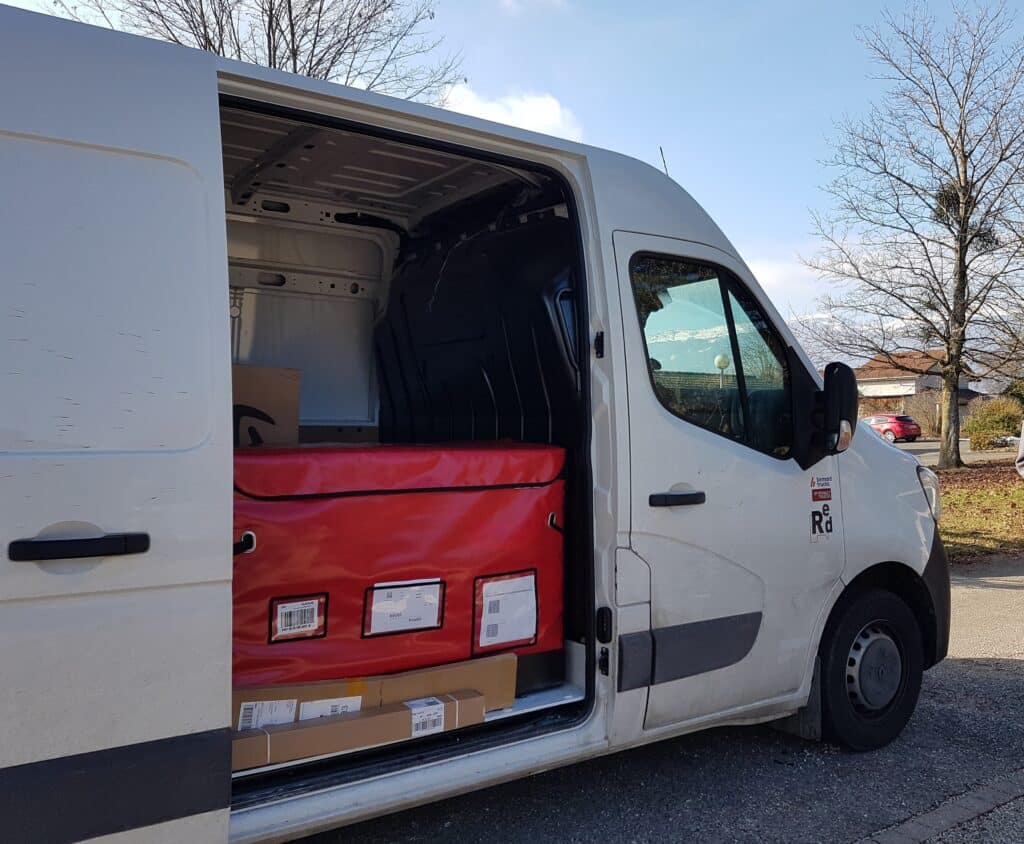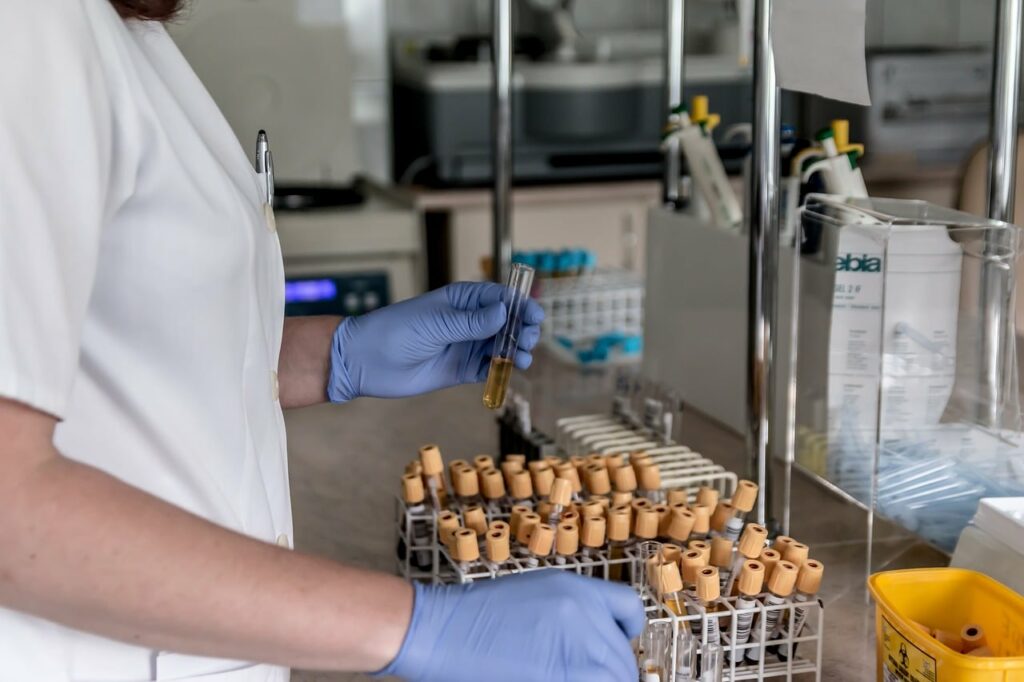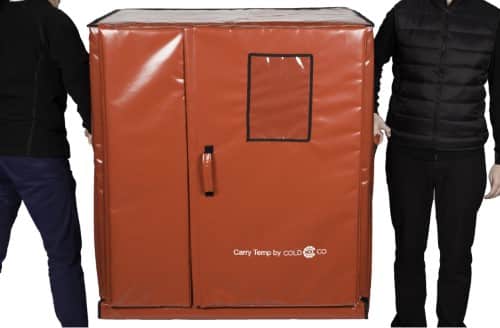A cold logistics revolution for agility, economy and sustainability
A leading French home-delivery food service recently carried out an in-depth rethink of its fleet and delivery practices. Gone are the refrigerated trucks, replaced by a more agile and economical solution : passive refrigeration with COLD & CO’s CarryTemp isothermal and refrigerated containers.

1. From a tri-temperature truck with compartmentalized refrigeration to a dry truck with modular refrigeration
1.1. The tri-temperature truck: a structured but inflexible solution
Initially, the company operated tri-temperature trucks, with dedicated compartments for dry, fresh and frozen goods. This model enabled temperature constraints to be respected for each type of merchandise, but remained inflexible and cumbersome. The fixed partitions limited modularity and reduced the useful volume available.
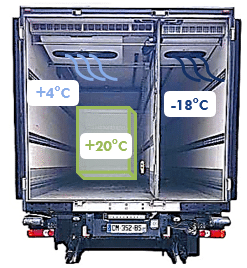
1.2. The combined single-temperature truck: a step towards simplification
Five years ago, the first change of direction took place with the abandonment of tri-temperature lorries in favor of mono-temperature lorries set up for fresh products, combined with the use of CarryTemp isothermal containers fitted with -21°C plates for frozen products.
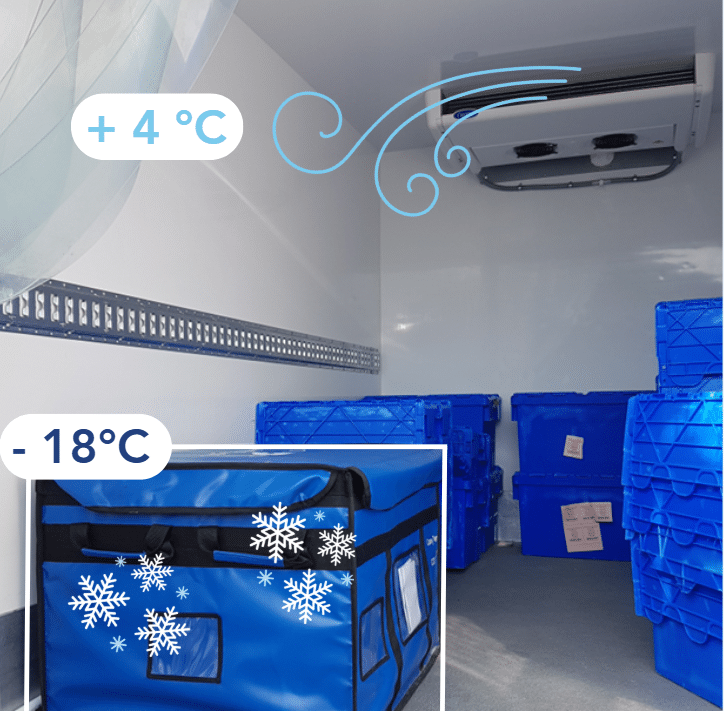
However, this new, simpler configuration had its limitations: in the absence of a specific compartment, dry products were stored at 4°C, an energy aberration that led to unjustified over-consumption.
Added to this were high economic costs:
- More expensive refrigerated vehicle rental,
- Heavy and frequent maintenance of the refrigeration unit,
- Vehicle overweight, reducing payload and increasing fuel consumption,
- And less-than-optimized use of interior space.
This observation was a key trigger in our search for a more agile, more rational… and more sustainable model.
1.3. The dry truck in multi-temperature passive refrigeration
Today’s solution is based on a Fiat Ducato dry van, combining volume, flexibility and energy efficiency.
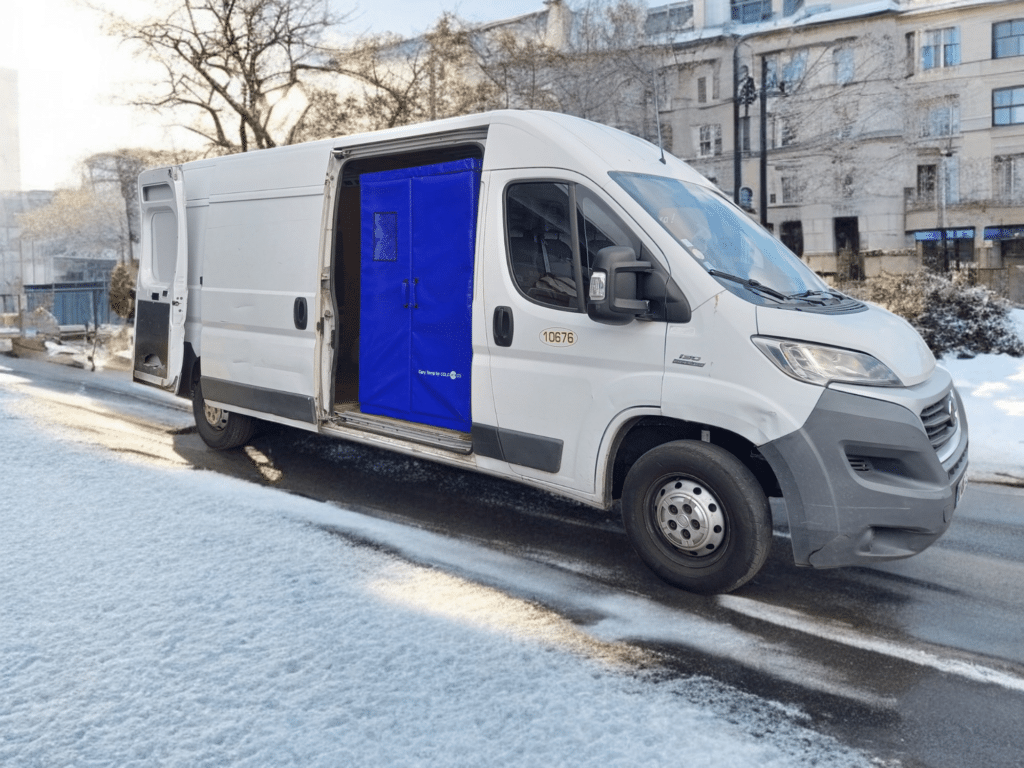
The truck is organized into three distinct zones :
- Up to 70 dry crocodile boxes stored directly in the vehicle’s main cell.
- A removable 2.3 m³ CarryTemp XXL cold room, installed at the rear, for up to 20 fresh crocodile cases.
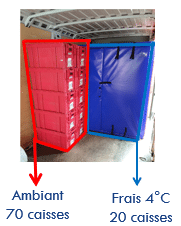
- A CarryTemp PM (147 L) or MM (246 L) dedicated to frozen foods, placed at the front of the vehicle, where the former passenger bench seat was removed to free up space.
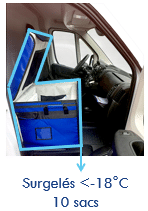
This modular layout enables products to be divided into temperature zones, while optimizing the useful volume, on-board weight and accessibility of products during deliveries. An organization that demonstrates the benefits of passive refrigeration: greater flexibility, fewer technical constraints.
2. Why change models? Agility, sobriety and reliability at the heart of the choice
The switch to a passive refrigeration solution gradually emerged as a concrete response to three major challenges: greater agility, lower costs, and a more reliable cold chain.
2.1. Greater operational agility
The switch to passive refrigeration in dry vehicles offers new flexibility in route planning:
- Possibility of reorganizing loading on the fly : place frozen foods at the front, free up the rear, adapt the format of the CarryTemp container according to the volume of frozen foods required.
- Easy integration of non-standard products : bags of coal, bulky parcels, goods not compatible with conventional containers.
- Lighter vehicle, thanks to the use of CarryTemp isothermal containers, much lighter than an active refrigeration system.
2.2. A logic of economic sobriety
Switching to passive cooling significantly reduces operating costs:
- Immediate fuel savings : up to 1.5L of fuel saved every 100 km thanks to the absence of a refrigeration unit to power and the reduction in total on-board weight.

- Lower vehicle rental costs : a dry van costs 20-30% less to rent than an equivalent refrigerated truck, while being lighter and more flexible.

- Less maintenance and technical breakdowns : mechanical chillers are sensitive to high temperatures and require frequent, often costly, maintenance.

Conclusion : All these benefits – fuel, rental, maintenance – make the investment in passive cooling perfectly manageable, with payback from the very first year of operation. A rare feat in a logistics context where fleet profitability is often strained.
Encouraged by these results, the company has extended this approach to its logistics partners, choosing to equip them with CarryTemp solutions too. Today, the fleet consists of 60% in-house vehicles and 40% operated by contract carriers. By standardizing its equipment, the company is strengthening its service consistency, reducing its dependence on heavy refrigeration solutions… and calmly preparing its transition to carbon-free logistics.
2.3. Tested and approved thermal performance, even under extreme conditions
A field trial was carried out in midsummer to compare the performance of passive cooling with that of a mechanical refrigeration unit. Result : the CarryTemp solution, fitted with calibrated eutectic plates, demonstrated better thermal stability throughout the rounds.
When outside temperatures exceed 30°C, mechanical refrigeration units are put to the test. The thermal delta to be maintained becomes too high (over 25°C to keep products at +4°C), resulting in :
– reduced efficiency,
– overheating of the unit,
– or even complete shutdown of the refrigeration system.

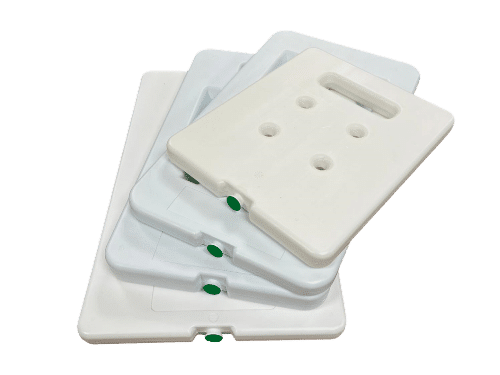
In contrast, a eutectic plate continues to distribute its cold without variation, regardless of external conditions.
This passive robustness means that long tours of up to 200 km can be covered without breaking the cold chain, and without depending on an on-board energy source.
CarryTemp containers are ATP-certified, attesting to their compliance with the requirements for temperature-controlled transport of perishable goods. An additional guarantee for professionals concerned with sanitary safety and regulatory compliance.
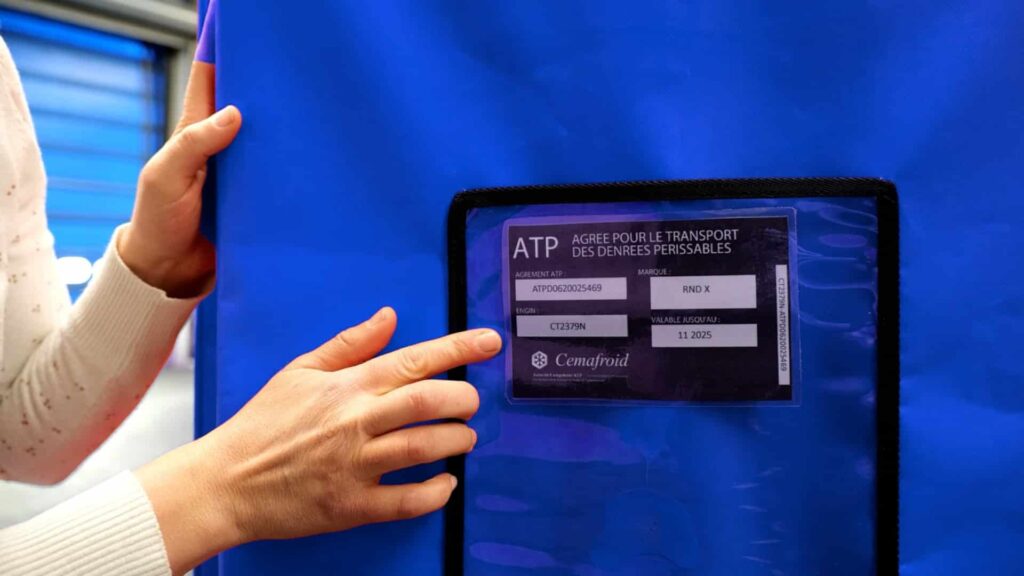
3. Modular logistics organization to match resources
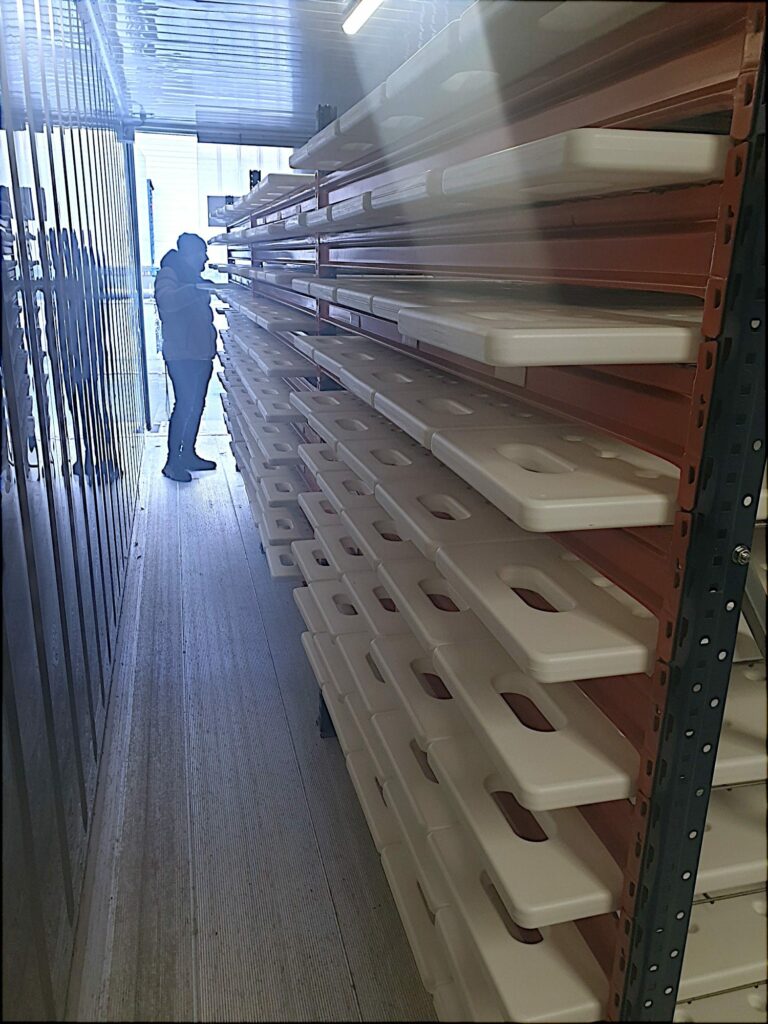
The success of the passive cooling solution depends as much on the performance of the containers as on the rigor of daily logistics. To achieve this, each site adapts its organization according to its human and operational constraints.
On some sites, drivers are completely autonomous. Each driver is responsible for :
- preparing his CarryTemp container
- loading the eutectic plates according to the seasonal protocol (summer/winter),
- and returning the plates to the cold room at the end of their shift.
Other sites have set up a more centralized organization, with a dedicated logistics officer. The latter :
- supervises case preparation prior to departure,
- checks the placement of cold plates,
- ensures that vehicles are properly docked,
- and ensures that the plates are reloaded in the cold room for the following rounds.
This organizational flexibility demonstrates that passive refrigeration can be integrated into a wide variety of environments, without imposing a single structure, but adapting to the resources and operational maturity of each site.
4. A mixed electric/thermal fleet made possible by the energy autonomy of passive cooling.
As part of a gradual transition to more sustainable mobility, one of the company’s sites now operates a mixed fleet, comprising 15 combustion-powered vehicles and 5 electric vehicles, out of a total of 20 trucks.
This cohabitation is made possible by the use of CarryTemp insulated containers, which are totally autonomous in terms of energy consumption. Unlike active refrigeration units, they require no power from the vehicle to maintain the target temperature.
As a result, the delivery configuration remains identical, reliable and with no compromise on the cold chain, whether the vehicle is thermal or electric. This thermal independence means that electric vehicles can be tested without modifying the logistics protocol, while ensuring the same quality of service.
This mixed approach also makes it possible to adapt motorizations to different contexts of use:
- Electric in urban environments, for short, low-emission rounds,
- Thermal in rural or extended areas, where autonomy or recharging infrastructures are still limited.
Here, CarryTemp plays the role of technological facilitator, guaranteeing the continuity of the cold chain, regardless of the on-board energy.
5. Customized support, the key to success

The success of this change of model depends as much on the quality of the equipment as on the human and technical support provided.
On this point, COLD & CO played a central role, providing local support at every stage of the roll-out.
From the earliest stages, our teams worked closely with the customer to :
- Guide the selection of containers and plates according to the volumes to be transported, the temperatures to be maintained and specific operational constraints,
- Define thermal configuration protocols adapted to different tour types (duration, distance, season),
- Train drivers and logistics managers in the use of containers, the management of eutectic plates, and good loading practices,
- Provide responsive after-sales service and ongoing technical advice, particularly during seasonal adjustments (summer/winter changeover, calibration of cold configurations).
This personalized support helped to secure the switch to passive cooling, while increasing the skills of our field teams. It is in line with COLD & CO’s determination to be more than just a supplier, but a long-term logistics partner.
And you, do you rethinking your cold chain too?
Are you a food retailer, logistics specialist or distributor?
Contact our COLD & CO experts to find out how you can make the transition to leaner, more flexible and just as efficient logistics.


